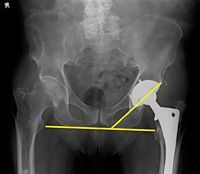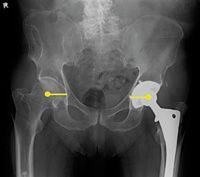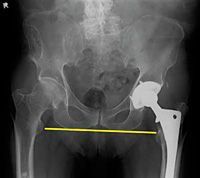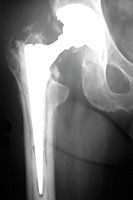Some doctors thrive in a personality-based clinic and have a loyal following no matter what services or equipment they offer, but for most chiropractic offices who are trying to grow and expand, new equipment purchases help us stay relevant and continue to service our client base in the best, most up-to-date manner possible. So, regarding equipment purchasing: should you lease, get a bank loan, or pay cash?
Radiographic Assessment of the Patient With a Total Hip Replacement
Osteoarthritis of the hip affects more than 4 million people in the U.S., and over 200,000 primary elective total hip replacements (THR) are performed per year. The number of revisions due to failure or just wearing out is estimated at 37,000, but there is no national total joint registry in the U.S. Therefore, there are no reliable estimates of the annual and cumulative rates and determinants of THR failure in the smaller hospitals that perform the vast majority of THR. (The lack of data on U.S. procedure volume and outcomes is not the topic for this article; it is just interesting to note that we rely on data from large referral-based hospitals and the national total joint registries developed in Scandinavian countries to monitor failure of THR for determining outcomes.)
| Indications for THR Revision According to the Swedish Hip Arthroplasty Register | |
| Reason for Revision | Rate of Occurrence |
| Aseptic Loosening | 75% |
| Deep Joint Infection | 8% |
| Dislocation | 6% |
| Fracture | 5% |
| Technical Error | 3% |
| Implant Fracture | 1% |
| Other | 4% |

Of course, as chiropractors we are not able to do anything about these complications, but we should evaluate any patient with a THR who has symptoms that might indicate problems with the THR. A simple AP pelvis view can be very helpful in determining if there are problems with the THR. If the patient has their initial baseline X-rays, a quick comparison can be employed to evaluate even slight changes in the prosthesis. Alignment and positioning should mimic normal anatomy.

The position of the acetabular component and the stem can be easily assessed on an AP view. The acetabular angle of inclination should be 40 degrees +/- 10 degrees. (Figure 1) Anteversion cannot be assessed on the AP and a frog leg view is very difficult to obtain in these patients, so CT is often used to assess this angle. The center of rotation, however, can be assessed on the AP view. (Figure 2)

The distance from center of the femoral head to teardrop (or other identifiable landmark) should be equal bilaterally. The iliopsoas tendon should pass just lateral to the center of the femoral head and helps to keep the hip in proper alignment. Excessive lateral positioning of the acetabular component results in the iliopsoas tendon crossing medial to the femoral head, placing the patient at risk for dislocation.

The center of the rotation will be different when comparing the hips. Leg-length discrepancy can also be a factor in THR complications. (Figure 3) This can also be assessed on the AP projection. The only other view one needs to take is an AP view of the THR side (which includes the femoral stem) to rule out loosening of the stem. (Figure 4)
These are just basis assessments of a THR, but will help in determining if the patient's symptoms are attributable to a problem with the THR. Most patients do well with total hip replacements, but when problems develop, chiropractors may be the first to see the patient. These simple assessments will help determine if the patient needs further follow-up and revision.


